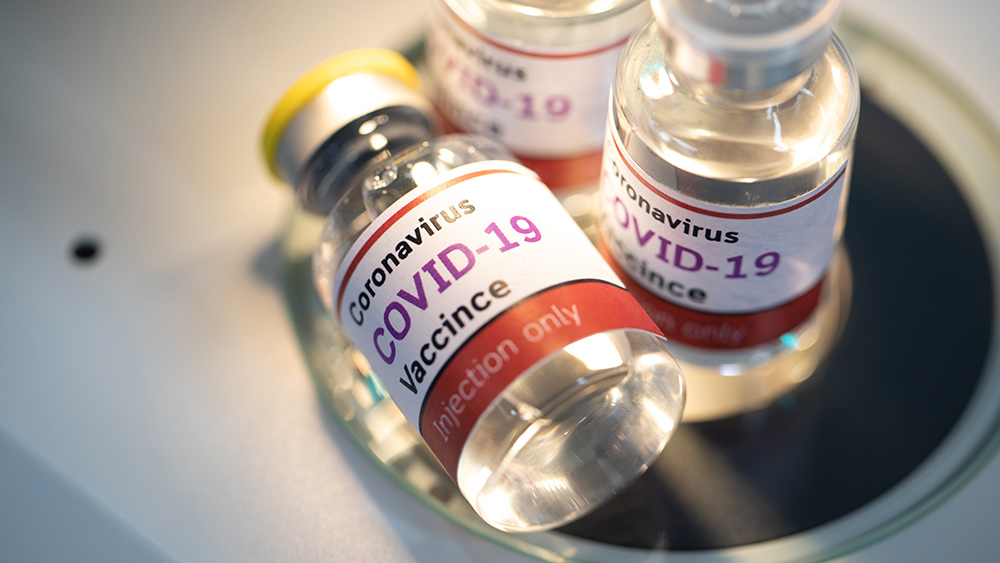Despite getting the vaccine, this 8 year old relies on prosthetic limbs after losing his legs to meningitis
01/01/2017 / By Ethan Huff

If vaccines are really responsible for eradicating communicable disease as is often claimed, then why did eight-year-old Kye Vincent lose his legs and left hand? This is the poignant question some are asking after reports of Kye’s successful prosthesis went public, indicating that, despite young Kye’s compliance with childhood vaccine requirements, he still contracted meningococcal septicaemia, more commonly known as meningitis.
According to the U.K.’s Daily Mail Online, Kye developed meningitis earlier this year, even though he had earlier received a vaccination for meningitis as recommended by public health authorities. The disease ravaged the poor boy’s body, forcing his doctors to put him into an induced coma to increase his chances of survival. Kye survived, but the deadly bacteria took both of his legs and one of his hands, all of which had to be removed.
It was a terrible time for young Kye and his family, as there were deep concerns that the boy might ultimately lose his life. Fortunately he didn’t, and his family is deeply grateful that not only did Kye live, but he was also able to get the implants he needed to allow him to walk and use both of his hands.
“Kye is the bravest person I know,” his mother Cheryl told the media. “There were times when we thought we’d lose him, but he’s a fighter and he’s not letting his disability hold him back. I’m just glad I noticed the signs and called the ambulance when I did. If I’d left it any longer, he might not be here today.”
Meningitis vaccines obviously don’t work
While this is all great news for Kye, it’s bad news for the meningitis vaccine, which clearly failed this young boy. News reports are clear that Kye received his meningitis vaccine in accordance with government guidelines, which the U.S. Centers for Disease Control and Prevention (CDC) claims provides “the best defense against meningococcal disease” — even though it obviously didn’t.
Even though the CDC admits that meningitis vaccines “are not 100% effective,” the government agency doesn’t disclose the full extent of what this means. Meningitis vaccines don’t really work as claimed, and they’re often very dangerous for young children. Even NPR admitted back in 2013 that meningitis vaccines are a failure, especially for newer mutations of the disease.
“It turns out that the meningitis B bacteria are tricky little things,” the NPR report explained, noting that many of the most recent meningitis outbreaks have been caused by B strains that don’t respond to vaccines.
“The older, more common vaccine (which protects against strains A, C, W-135 and Y) works by training the body’s immune cells to recognize the sugar on the meningitis-causing bacteria as something bad…The same approach won’t work for the B-type bacteria.”
Beyond this, the most common meningitis vaccines on the market today are loaded with toxic ingredients like monkey cells, aluminum, formaldehyde (rat poison), aborted human fetal tissue, rodent brains, and more — things that clearly aren’t good for the bodies of developing children!
It’s no wonder, in light of all this, that innocent children like young Kye are developing meningitis despite getting vaccinated. The onslaught of chemicals they receive from the vaccine itself combined with a weakened immune system and exposure to the virus is a recipe for health disaster, as evidenced by his outcome.
At the current time, doctors are trying to figure out why Kye’s injection for meningitis C failed to protect him against the disease, which appears to specifically be a factor of his body’s failure to respond as expected by producing the antibodies necessary the ward off the bacteria.
Sources:
Submit a correction >>
Tagged Under:
meningitis, toxins, vaccines
This article may contain statements that reflect the opinion of the author
RECENT NEWS & ARTICLES
Vaccines.News is a fact-based public education website published by Vaccines News Features, LLC.
All content copyright © 2018 by Vaccines News Features, LLC.
Contact Us with Tips or Corrections
All trademarks, registered trademarks and servicemarks mentioned on this site are the property of their respective owners.





















